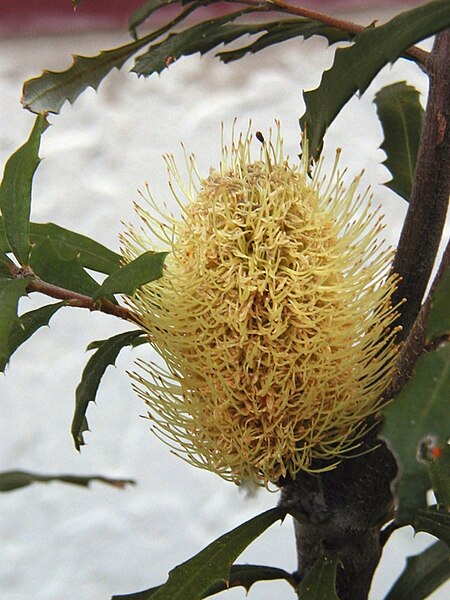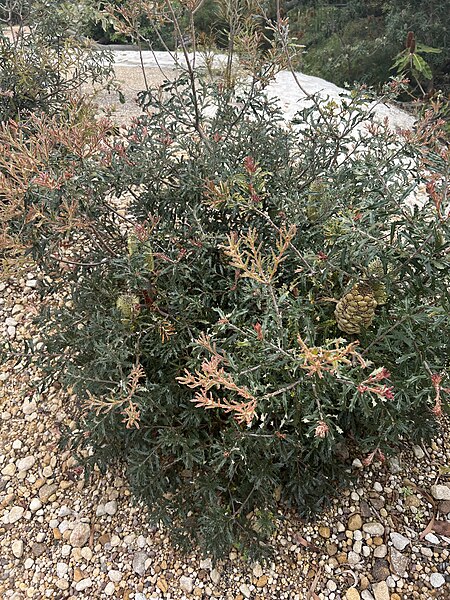Banksia canei, commonly known as the mountain banksia, is a species of shrub that is endemic to southeastern Australia. It is generally encountered as a many-branched shrub that grows up to 3 m (10 ft) high, with narrow leaves and the yellow inflorescences appearing from late summer to early winter. The old flowers fall off the spikes and up to 150 finely furred follicles develop, which remain closed until burnt in a bushfire. Each follicle bears two winged seeds. Response to fire is poorly known, although it is thought to regenerate by seed. Birds such as the yellow-tufted honeyeater and various insects forage among the flower spikes. It is frost tolerant in cultivation, but copes less well with aridity or humidity and is often short-lived in gardens. One cultivar, Banksia 'Celia Rosser', was registered in 1978, but has subsequently vanished.
Banksia canei
Furry follicles
Habit
Banksia saxicola, the rock banksia or Grampians banksia, is a species of tree or shrub in the plant genus Banksia. It occurs in Victoria in two distinct populations, one in The Grampians and the other on Wilsons Promontory. Formerly considered to be a form of B. integrifolia, it was described as a distinct species by Alex George in 1981. It is most closely related to Banksia marginata.
Banksia saxicola




